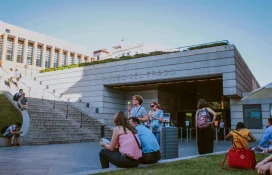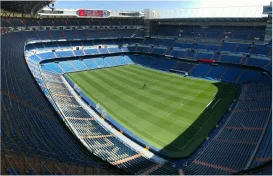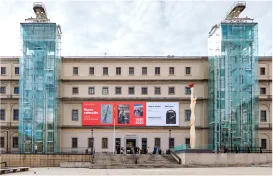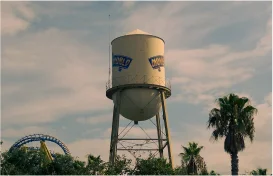Royal Palace of Madrid History
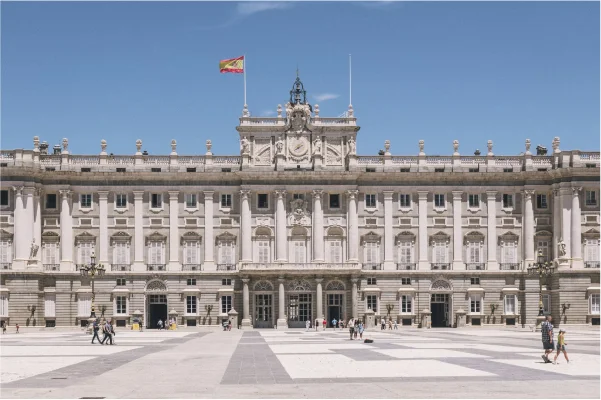
Support when you need it
Customer service to help you with all your needs from 8:00 a.m. to 7:00 p.m.
Fast and online booking
Choose the best option for your needs and preferences and avoid the lines.
Top attraction in Madrid
Discover the grandeur of the Royal Palace, a symbol of Spanish royalty.
What is the Royal Palace of Madrid?
The Royal Palace of Madrid (Palacio Real de Madrid) is the reliable house of the Spanish royal family, although it isn’t always the family’s primary house nowadays. Instead, the palace serves as a venue for country ceremonies, royal activities, and legit features. It is placed on the Almudena Hill, overlooking the Manzanares River in Madrid, Spain, and gives site visitors a glimpse into Spain’s regal past via its lavish interiors and vast series of art and artifacts.
Royal Palace of Madrid History Timeline
The origins of the Royal Palace trace back to the Alcázar of Madrid, a medieval Moorish fort that stood at the equal site. The Alcázar served as the residence of Spanish monarchs for hundreds of years, but a devastating hearth in 1734 destroyed the shape. This destruction supplied the opportunity for a new and grander palace to be built.
Beginnings of the Royal Palace of Madrid
Why Was the Royal Palace of Madrid Built?
The Royal Palace of Madrid was constructed to serve as an alternative for the antique Alcázar, which was destroyed within the fireplace. King Philip V of Spain, the primary Bourbon monarch, decided to construct a brand new residence that would replicate the electricity and prestige of the Spanish crown. His imaginative and prescient turned into to create a palace that might be no longer only a house but additionally a image of the Spanish monarchy’s dominance in Europe.
Construction of the Royal Palace of Madrid
Construction of the Royal Palace began in 1738 below the reign of Philip V. The chosen website online became that of the antique Alcázar, and the challenge turned into overseen through several outstanding architects. The first architect assigned to the task became Giovanni Battista Sacchetti, an Italian architect, accompanied with the aid of Francesco Sabatini, who oversaw lots of the development. The palace’s layout drew proposals from Italian Baroque and Neoclassical patterns, combining elements of grandeur with functional royal area.
Despite challenges, which included monetary setbacks and changes in royal management, the development of the Royal Palace persisted below the next monarchs. The paintings were completed in 1764, even though indoors ornament and extra modifications persevered into the nineteenth century.
Architect of the Royal Palace of Madrid
Francesco Sabatini, the Italian-born architect, played a pivotal function in the layout and production of the Royal Palace of Madrid. Sabatini became appointed as the lead architect within the mid-18th century and is credited with shaping the very last form of the palace. His designs had been motivated via Italian Renaissance structure, which he merged with Spanish Baroque and Neoclassical patterns to create a palatial house suit for the monarchy. Sabatini’s influence may be visible in the palace’s symmetrical format, grand staircases, and classical detailing.
Royal Palace of Madrid Today
Today, the Royal Palace of Madrid stands as a living monument to Spain’s royal history. It is open to the public, imparting site visitors a risk to explore the opulent rooms, gardens, and collections housed within its walls. The palace is used for official ceremonies, which include kingdom banquets, receptions, and different important activities, but it is not the number one residence of the royal circle of relatives. King Felipe VI and his family reside in the Palace of Zarzuela, located on the outskirts of Madrid.
Get Your Tickets Now to Learn the Complete Story of the Royal Palace of Madrid
Visiting the Royal Palace gives an extraordinary opportunity to step into the world of Spanish royalty. To learn about the history, structure, and the treasures that lie inside, it is recommended to get your tickets earlier. The palace boasts astonishing collections of art work, sculptures, tapestries, and furniture, a lot of which were curated over centuries.

FAQs About Royal Palace of Madrid History
The Royal Palace of Madrid is a historical landmark that represents Spain’s royal history. It has witnessed giant events in Spanish history, from royal celebrations to political transitions. As the seat of the Spanish monarchy for centuries, the palace stands as a symbol of the strength and continuity of the Spanish royal family.
It was constructed as a replacement for the old Alcázar, which was destroyed by the use of a fireplace in 1734. King Philip V desired to create a grand and becoming residence for the Spanish monarchy that could replicate their electricity and prestige.
The lead architect became Francesco Sabatini, whose designs have shaped the palace’s shape, ensuring its architectural splendor and grandeur. Sabatini’s Neoclassical method left a lasting effect on the layout of the Royal Palace.
Construction of the Royal Palace began in 1738 and was largely completed by 1764, although interior work and additional modifications continued for years.
Throughout its records, the Royal Palace has hosted principal activities, including royal marriages, coronations, and the signing of essential treaties. It has also witnessed the turbulent intervals of the Spanish Civil War and the transition to democracy in the 20th century.
Today, the Royal Palace is used for legit capabilities, including nation dinners, ceremonies, and receptions. It is meticulously preserved to keep its historical integrity, with many rooms and spaces open to the general public for educational excursions. The palace houses a considerable series of art and furnishings, that are cautiously curated and conserved for destiny generations.
Other things to do in Madrid

